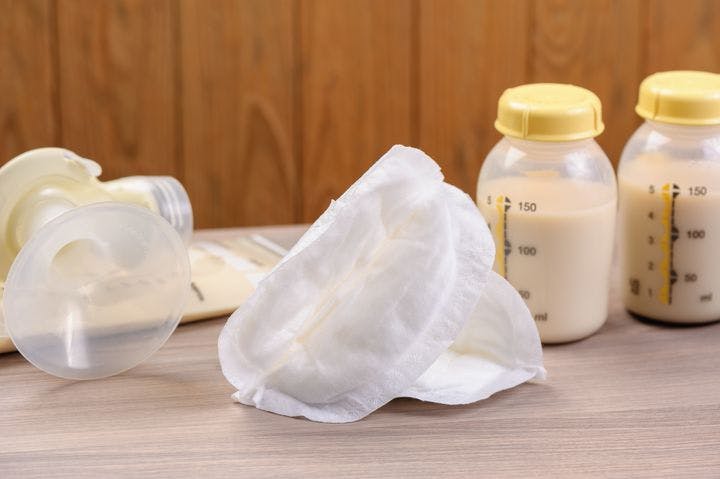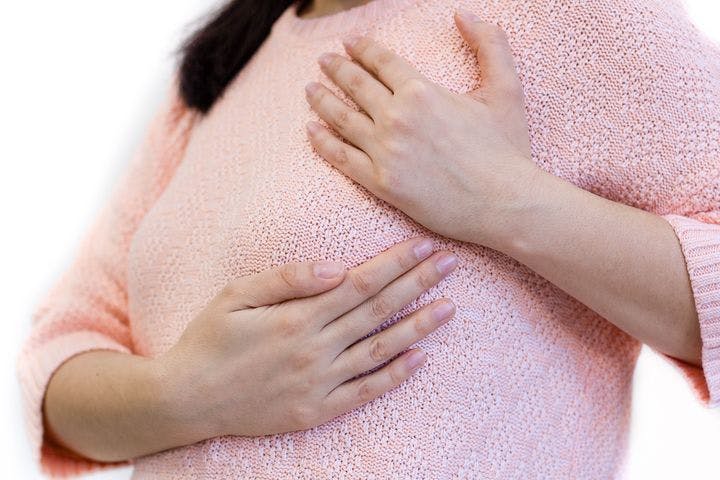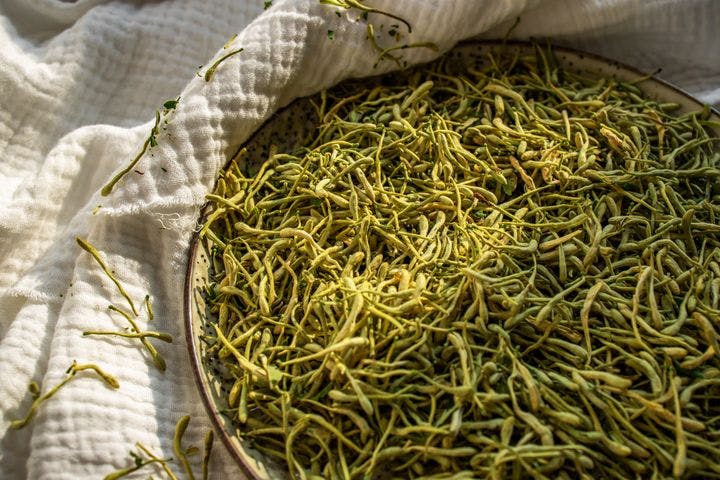Newborn Breastfeeding Tips from a TCM Perspective
Published | 6 min read
Wondering how to cope with newborn breastfeeding issues? Here’s a TCM perspective on it to improve the bonding experience with your baby.

To understand the common problems associated with newborn breastfeeding, here’s what you need to know and ways to address them.
Engorged Breasts

After giving birth, it’s normal to come across heavier, bigger, and more painful breasts. As milk is being produced around the clock and the blood supply to your breasts increases, swelling tends to take place along with discomfort and increased tenderness.
Other reasons for having engorged breasts would be because you’ve skipped nursing or pumping sessions, you’re making more milk than your baby needs, your baby’s changed their feeding schedule, or you’re weaning your child from breastmilk.
“There are two types of engorgement – pathological and physiological. Pathological engorgement occurs when the amount of tissue retention is extreme.”
Dr. Wong Boh Boi, Senior Lactation Consultant and Assistant Director (Clinical), Thomson ParentCraft Centre
Preventing engorged breasts
To prevent pathological engorgement, it’s suggested to initiate breastfeeding early and frequently.
Physiological engorgement is the overfilling of the breasts from the milk supply, causing breast fullness and enlargement. This feeling of extreme fullness will go away after 24 hours with proper breastfeeding guidance. Feeding your baby provides the best relief.
To alleviate the discomfort further, a popular home remedy is tucking cabbage leaves into the bra in between feedings. It might sound strange but applying chilled
Change the leaves every two to three hours as they will wilt.
Cracked Nipples
This newborn breastfeeding problem occurs when your baby doesn’t latch well to your breasts. Nipples can look crusty, flaky, red, and dry, and feel raw, itchy, irritated, or sore. Improper nursing techniques and improper use of a breast pump are the causes, so here is
Treating Cracked Nipples
Dr Wong recommends this newborn breastfeeding tip – Smearing some breastmilk on cracked nipples helps with healing. If breastfeeding cream is
Mastitis

Mastitis is an infection that develops in the breast tissue, causing inflammation. This occurs when a blocked milk duct or bacteria on the skin and the baby’s saliva invades the breast tissue. It can also develop when a mother and baby are still figuring out the right breastfeeding techniques, usually occurring within the first six to 12 weeks of nursing.
The symptoms you may feel or see are:
- Redness, especially in the form of patches, in the breast area
- Warm and painful breasts when touched
- A constant burning sensation in the breasts
- Flu-like symptoms such as chills, fatigue, body aches, and elevated body temperature
It’s important to distinguish the case of mastitis as infective or non-infective early on because the first mentioned generally demands a course of antibiotics.
According to Kang Phaik Gaik, Senior Nurse Manager and Senior Lactation Consultant at Alvernia Parentcraft Centre in Singapore, “If mastitis is not treated well with the right antibiotics, it may lead to a breast abscess. It needs to be removed by a breast surgeon via needle aspiration or incision to drain the pus.”
Preventing breast mastitis
Lowering your chances of mastitis can happen by breastfeeding more frequently to steer clear of breast engorgement. Gently expressing any leftover milk is another technique to include after feeding.
“Gently but firmly massage the lump towards
Dr Wong Boh Boi, Senior Lactation Consultant and Assistant Director (Clinical), Thomson ParentCraft Centre, Singapore
Other breastfeeding tips are getting sufficient rest, drinking plenty of fluids, applying cool compresses after feeding, using stroking techniques to massage the milk duct, and wearing loose-fitted clothes.
How to treat breast mastitis
Acupuncture is one treatment mothers can undergo while on antibiotics. According to a study from the Journal of Korean Obstetrics and Gynecology, the TCM technique showed similar effectiveness to antibiotics and had many possibilities as one of the treatments for mastitis.
TCM physicians may also prescribe Gua Lou San (瓜蒌散), a herbal formula comprising snake gourd (she gua, 蛇瓜), honeysuckle (yin qiao, 银翘), Dahurian Angelica root (bai zhi, 白芷), and tangerine peel (chen pi, 陈皮).

Plugged Milk Ducts
Not only can plugged milk ducts lead to mastitis, but they can also create milk blisters. Plugged milk ducts happen during lactation when the milk duct is blocked (from inflammation in the soft tissues and surrounding blood vessels), preventing milk from reaching the nipple. This causes a tender, painful lump in the breast.
Preventing and treating plugged milk ducts
Treating this before it becomes an infection is necessary. It can be nipped in the bud by remembering your nursing sessions, breastfeeding instead of pumping, varying breastfeeding positions, and practising acupuncture and acupressure.
A review of six studies conducted in 2021 by the International Journal of Pediatrics revealed that acupuncture significantly increased exclusive breastfeeding, while acupressure improved breast milk production. Both treatments decreased breast engorgement and breast pain in lactating mothers.
One TCM alternative is the EYS postnatal care package, which offers 15 kinds of herbal soups for women who have recently given
One thing to always take note of is the importance of breastfeeding (and doing so frequently) because breast milk contains the nutrients that babies need. It encourages brain development, helps the immune system, and lowers the risk of allergic reactions.
No matter what you may face when entering motherhood, these tips on newborn breastfeeding will help you steer clear of nursing no-nos and how to handle situations that may arise. Refer to this article as a guide and enjoy your pain-free bonding sessions with your little one.
This is an adaptation of the article “Breastfeeding Wellness”, which first appeared on Eu Yan Sang website.
References
- International Journal of Nursing Studies. 2017. Application of cabbage leaves compared to gel packs for mothers with breast engorgement: Randomised controlled trial. [online] Available at <https://www.sciencedirect.com/science/article/abs/pii/S0020748917301931> [Accessed on 14 December 2022]
- Journal of Korean Obstetrics and Gynecology. 2017. The Effectiveness of Acupuncture and Moxibustion Treatment for Mastitis: A Systematic Review. [online] Available at <https://koreascience.kr/article/JAKO201724963132733.page> [Accessed on 15 December 2022]
- Journal of Pediatrics. 2021. The Effect of Acupressure, Acupuncture and Massage Techniques on the Symptoms of Breast Engorgement and Increased Breast Milk Volume in Lactating Mothers: A Systematic Review. [online] Available at <https://ijp.mums.ac.ir/article_17271_c1af14c848b841c2a2ad419c7fcc5bfb.pdf> [Accessed on 15 December 2022]
Share this article on






